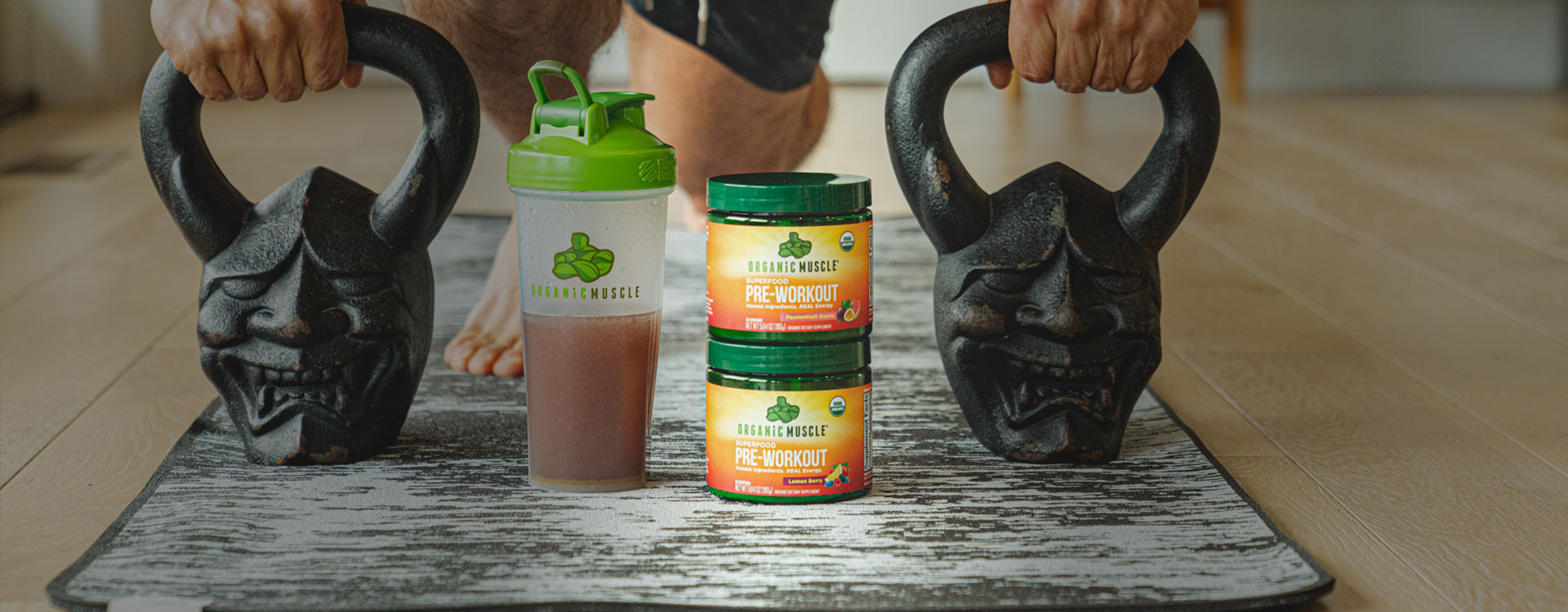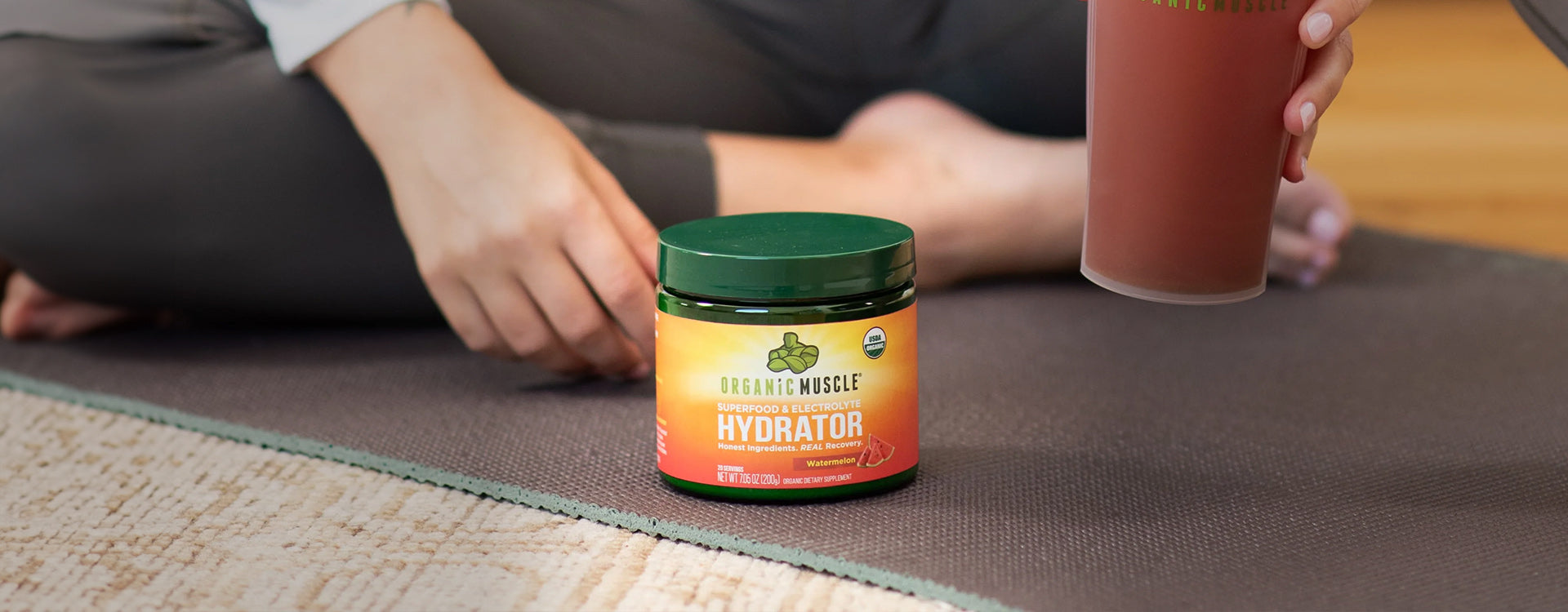Key Takeaways:
- Target the Right Muscles: Focus on the latissimus dorsi, traps, rhomboids, and erector spinae to build the iconic V-shaped back.
- Incorporate Compound and Isolation Exercises: Utilize deadlifts, pull-ups, and rows for overall back development, and include lat pulldowns and single-arm dumbbell rows for targeted isolation.
- Prioritize Recovery and Nutrition: Support your back workouts with proper recovery and a balanced diet, integrating high-quality supplements for optimal muscle growth and strength.
Are you dreaming of that coveted V-shaped back? A well-developed back enhances your overall physique and improves posture, stability, and functional strength. Whether lifting weights, playing sports, or simply aiming for better aesthetics, having a strong, defined back is crucial.
In this article, we’ll break down the best back workouts to help you build strength and create that wide, V-shaped look. Expect a mix of exercises targeting your upper, middle, and lower back muscles and tips on proper form and rep ranges to maximize results. Let’s start on your path to a stronger, more sculpted back!
Why A V-Shaped Back Matters: Benefits Beyond Looks
A V-shaped back, characterized by well-developed latissimus dorsi (lats), is often associated with strength, athleticism, and a visually appealing physique. While aesthetics are undoubtedly a factor, the benefits of a V-shaped back extend far beyond looks.
Functional Benefits of a V-Shaped Back
- Improved Posture: A strong back helps maintain proper spinal alignment, reducing the risk of back pain and discomfort.
- Enhanced Upper Body Strength: The lats are essential for various upper body movements, including pulling, rowing, and overhead presses.
- Increased Core Stability: A strong back contributes to a stable core, crucial for balance, coordination, and overall athletic performance.
- Reduced Risk of Injury: Well-developed back muscles can help protect the shoulders and elbows from strain and injury.
Key Muscles You Need To Target For A V-Shaped Back
Achieving a V-shaped back requires a targeted approach, focusing on specific muscles contributing to the breadth and definition of your upper body. Understanding these key muscles is crucial for anyone looking to enhance their back workouts effectively. Here's a breakdown of the essential muscle groups to target for that coveted V-shape.
Latissimus Dorsi
Often referred to as "lats," the latissimus dorsi muscles are the largest in your back. They extend from the mid to the lower back and, when developed, contribute significantly to the V-shape by broadening your back. Exercises like pull-ups, lat pulldowns, and straight-arm pulldowns are highly effective in engaging and strengthening this muscle group.
Trapezius
The trapezius muscles, or "traps," extend from your neck to the middle of your back and spread across your shoulder blades. Targeting the traps, especially the middle and lower regions, increases the width of your back. To sculpt these muscles, incorporate exercises such as dumbbell shrugs and face pulls.
Rhomboids and Teres Major
Situated between your shoulder blades, the rhomboids play a critical role in retracting the scapula and adding depth to your back. The teres major, located on the outer edge of the shoulder blade, works alongside the lats to give your back a wing-like appearance. Effective workouts include seated or bent-over rows, focusing on squeezing your shoulder blades together for maximum engagement.
Erector Spinae
While often overlooked, the erector spinae muscles that run along your spine are essential for a strong and stable back. Strengthening these muscles contributes to the overall appearance of your back, supports proper posture, and reduces the risk of injury. Deadlifts and hyperextensions are excellent choices for targeting the erector spinae.
Essential Compound Exercises For Back Development
Incorporating compound exercises into your routine is paramount to achieving a V-shaped and stronger back. These multi-joint movements engage various muscles simultaneously, fostering functional strength and enhancing muscle symmetry. Here are some of the most effective compound back workouts to sculpt your desired physique.
Deadlifts
Deadlifts reign supreme in back development. This powerhouse movement targets the lower back, traps, and forearms while engaging your glutes, hamstrings, and core. It's a foundational exercise that supports overall strength and muscle growth. Start with a comfortable weight to master the form before progressively overloading.
Pull-ups and Chin-ups
These classic exercises are staples for back workouts, demanding significant upper-body strength and endurance. Pull-ups primarily focus on the latissimus dorsi (lats) to create that coveted V-shape, while chin-ups, with a closer and often underhand grip, place more emphasis on the biceps. Incorporating both variations into your routine ensures a balanced and comprehensive back development.
Bent-over Rows
Bent-over rows are versatile and can be performed with a barbell, dumbbells, or a cable machine. This exercise targets the middle and upper back, enhancing thickness and strength. Proper form is crucial to avoid strain on your lower back, emphasizing the importance of engaging your core throughout the movement.
T-Bar Rows
T-bar rows are another excellent multi-joint exercise. They focus on the middle back and engage the lats, shoulders, and biceps. This exercise allows for significant weight, encouraging muscular hypertrophy and strength gains. A narrower grip will target the middle back more intensely, while a wider grip broadens the lats.
Cable Rows
Cable rows are unparalleled for a controlled, targeted approach. They allow constant tension throughout the movement, which is essential for muscle growth and endurance. Varying the grip and angle can target different areas of the back, making this a versatile addition to your back workouts.
Targeted Isolation Exercises For A Chiseled Back
Integrating targeted isolation exercises into your fitness routine is essential to sculpting a V-shaped, stronger back. These exercises focus on specific muscles in the back, improving muscle strength and enhancing overall definition. Here’s a guide to some of the most effective back workouts to help you achieve a chiseled back.
Lat Pulldowns
Lat pulldowns are quintessential in targeting the latissimus dorsi, the largest back muscle responsible for that coveted V-shape. Sit at a lat pulldown station and grasp the bar with a wide grip to execute. Lean back slightly and pull the bar down to your chest, then slowly return to the start. Ensure your movements are controlled to maximize muscle engagement.
Seated Cable Rows
This exercise is fantastic for strengthening the middle back and improving overall back thickness. Sit at a cable row station, feet braced. Grab the handle and pull it towards your waist while keeping your back straight. Pause when the handle is at your waist, then slowly extend your arms. Maintaining a straight back throughout the exercise is crucial for preventing injury and ensuring targeted muscle work.
Single-Arm Dumbbell Rows
Single-arm dumbbell rows are unparalleled for isolating each side of your back and improving muscle symmetry. Place one knee on a bench with the other foot on the ground. Lean forward so your back is nearly parallel to the floor, and hold a dumbbell in the opposite hand of the knee on the bench. Lift the dumbbell to your chest, keeping your elbow close to your body, then lower it back down. This exercise targets the back and engages the core due to the stabilization required.
Back Extensions
This exercise, performed on a hyperextension bench, targets the lower back muscles, which are crucial for overall back strength and stability. Position yourself on the bench with your feet anchored. Cross your arms over your chest or place your hands behind your head. Bend forward at the waist, lower as far as comfortable, then slowly return to the starting position. For added resistance, holding a weight plate against your chest can increase the workout’s intensity.
Creating A Balanced Back Workout Routine
A strong, V-shaped back stands out aesthetically and enhances your overall fitness and health. Achieving this requires a well-rounded approach to your back workouts, focusing on developing major muscles and strengthening supporting muscle groups. Here, we outline principles for creating a balanced back workout routine that promotes muscle growth, strength, and endurance.
Prioritize Compound Movements
Start your back workouts with compound movements that target multiple muscle groups simultaneously. Exercises like deadlifts, pull-ups, and bent-over rows engage the entire back and your shoulders and arms, providing a solid foundation for strength and muscle growth. These efficient and functional movements improve your performance in other workouts and daily activities.
Incorporate Isolation Exercises
After the compound movements, focus on isolation exercises to target specific muscles for balanced development. Lat pull-downs, back extensions, and single-arm dumbbell rows allow you to focus on individual muscles, such as the latissimus dorsi, rhomboids, and traps. This targeted approach ensures all areas of your back receive attention, contributing to a more defined V-shape.
Emphasize Progressive Overload
For continuous improvement, your back workouts must include progressive overload. This means gradually increasing your exercises' weight, reps, or intensity over time. By challenging your muscles consistently, you encourage hypertrophy (growth) and increase strength. Remember, progression can also come from improving your form and increasing the range of motion.
Focus on Recovery and Nutrition
Recovery is a crucial part of any workout routine. Ensure you allow enough rest between back workouts to promote muscle repair and growth. Incorporating rest days, focusing on sleep quality, and managing stress are essential for recovery. Additionally, support your back workouts with proper nutrition.
High-quality proteins, healthy fats, and complex carbohydrates fuel your workouts and aid in recovery. Complementing your diet with certified organic, non-GMO, and vegan supplements from Organic Muscle can further enhance your results, providing clean, efficacious nutrients that align with your health and fitness goals.
Maintain Balance and Symmetry
Pay attention to balance and symmetry in your back workouts. Ensure you're evenly working both sides of your body to prevent imbalances that could lead to posture issues or injuries. Incorporating unilateral exercises (those that work one side at a time) can help maintain or restore balance between the two sides of your back.
Tips For Maximizing Back Growth
Achieving a V-shaped, stronger back is not just about your workouts but also how you do them. Here are several tips to ensure your back workouts are as effective and efficient as possible, leading to optimal back growth and strength gains.
Focus on Form First
Before increasing weight or volume, ensure that your form is impeccable. Proper form is crucial not only for maximizing muscle engagement but also for preventing injury. Each back exercise has a specific technique that, when followed, targets the intended muscles accurately. Taking the time to master the form of each exercise will significantly improve your results.
Incorporate a Variety of Exercises
The back comprises multiple muscle groups, including the latissimus dorsi, rhomboids, and trapezius. To develop a well-rounded, V-shaped back, it's important to incorporate various exercises targeting these areas. Include pull-ups, rows, deadlifts, and lat pulldowns in your routine to work the back from various angles and promote balanced growth.
Increase Intensity Gradually
As your back gets stronger, it's important to gradually increase the intensity of your workouts to continue challenging your muscles. This can be achieved by adding more weight, increasing reps, or incorporating advanced techniques like supersets or drop sets. However, listening to your body and increasing intensity only at a pace that feels manageable and safe is crucial.
Prioritize Recovery
Recovery is just as important as the workouts themselves when it comes to muscle growth. Ensure you're giving your back adequate time to recover between workouts. This includes getting enough sleep, consuming protein-rich foods to aid muscle repair, and possibly supplementing your diet with high-quality.
Stay Consistent
Consistency is key in any fitness journey. Develop a workout schedule that allows you to train your back regularly while allowing sufficient recovery time. Sticking to your plan and gradually increasing your workout intensity will lead to visible improvements over time.
Avoid These Common Mistakes When Training For A V-Shaped Back
As you pursue the journey towards achieving a V-shaped, stronger back through dedicated back workouts, optimizing your approach is key to seeing the fruits of your labor. Here, we illuminate common pitfalls to avoid, ensuring your training is effective and safe.
Neglecting Proper Form
One of the most critical errors in back training is neglecting proper form. It's easy to get caught up in lifting heavier weights or performing more repetitions, but without proper form, you risk not only injury but also minimized gains. Ensure you're engaging the right muscle groups with each exercise, and don’t hesitate to seek guidance or use a mirror to correct your posture.
Overlooking the Importance of Variety
Relying on the same back workouts repeatedly is a common mistake. Your back is a complex muscle group, requiring a variety of exercises to develop its strength and shape fully. Incorporating a mix of pull-ups, rows, and lower back exercises can provide comprehensive coverage and prevent plateauing.
Just like your workouts, diversifying your nutrition with our range of supplements, including protein powders and pre-workout mixes, can support the development of a strong, V-shaped back.
Skipping Stretching and Recovery
Another overlooked aspect of training is the importance of stretching and recovery. Without allowing your muscles to rest and recuperate, you’re hindering your progress and increasing the risk of injury. Implementing dynamic stretches before your workout and static stretches afterward can enhance flexibility and prevent stiffness.
Not Balancing Your Workout Routine
Focusing solely on back workouts without balancing your routine with other muscle groups can lead to imbalances and structural issues. A well-rounded fitness regimen that includes attention to all muscle groups and our holistic supplements ensures balanced growth and overall health.
Underestimating the Role of Nutrition
Lastly, the role of nutrition in building a V-shaped back cannot be overstated. Ensure your diet includes ample protein, healthy fats, and carbohydrates for energy. Integrating Organic Muscle’s certified organic, keto-friendly supplements into your diet can fill any nutritional gaps, enhancing your workout results and overall wellness.
Avoiding these common mistakes when training for a V-shaped back can significantly affect your fitness journey. With a focus on proper form, variety, recovery, balance, and nutrition, supported by our health-focused supplements, you're on your way to achieving not just a visually appealing back but a symbol of strength and dedication to your holistic health.
Final Thoughts
Incorporating these best back workouts into your routine can significantly improve your strength and posture and contribute to that sought-after V-shaped silhouette. However, achieving the best results requires more than diligent exercise; it demands a holistic approach to wellness that nurtures your body both inside and out. This is where Organic Muscle steps in by offering supplements that align with your commitment to health and fitness.
Our range of Certified Organic, non-GMO, Vegan, Gluten-Free, Keto-Friendly, and Dairy-Free supplements is designed to support every aspect of your wellness journey. They ensure that your body receives the premium fuel it needs to thrive alongside your rigorous back workout regimen.
Remember, building a stronger, more defined back enhances your physique and bolsters your overall health, improving functionality in daily life and athletic performance. With the right exercises and Organic Muscle's superior supplements, you're setting yourself on a path toward optimal physical health and wellness.
Read also:
- 10 Best Leg Workouts For Runners To Boost Endurance
- 10 Best Arm Workouts To Build Lean, Defined Muscles
- Best Glute Workouts For A Stronger, Rounder Booty
Frequently Asked Questions About The Best Back Workouts For A V-Shaped, Stronger Back
How often should I train my back for optimal results?
For optimal results, it’s recommended that you train your back at least twice a week. This frequency ensures adequate stimulus for muscle growth and strength gains while allowing enough recovery time between sessions. Incorporating variety in your back workouts can also help you achieve comprehensive development and avoid plateaus.
Are pull-ups effective for creating a V-shaped back?
Yes, pull-ups are highly effective for creating a V-shaped back. They primarily target the latissimus dorsi muscles, key to widening the upper body and achieving that desired V-shape. Incorporating different variations, such as wide-grip, narrow-grip, and weighted pull-ups, can further enhance muscle engagement and development.
What is the difference between wide-grip and narrow-grip lat pulldowns?
Wide-grip lat pulldowns primarily target the outer part of the latissimus dorsi, emphasizing the width of the back, which is crucial for a V-shaped torso. On the other hand, narrow-grip pulldowns focus more on the lower lats and involve the rhomboids and middle traps, contributing to back thickness. Both variations are beneficial and should be included in back workouts for balanced development.
How important is form and technique in back workouts?
Form and technique are paramount in back workouts to ensure each exercise's effectiveness and minimize the risk of injury. Proper form maximizes muscle engagement and allows for a full range of motion, leading to better strength and muscle gains. It’s important to focus on controlled movements and to avoid using momentum to lift weights.
Can I use dumbbells for an effective back workout?
Dumbbells are highly versatile and can perform a wide range of back exercises. They allow for unilateral movements, which can help correct imbalances and enhance muscle symmetry. Exercises such as single-arm rows, deadlifts, and reverse flyes with dumbbells can effectively target the various back muscles.
What is the recommended number of sets and reps for back exercises?
A general recommendation for muscle growth and strength is to perform 3 to 5 sets of 6 to 12 repetitions for each back exercise. However, the specific number can vary based on individual fitness levels, goals, and exercise. It’s beneficial to occasionally vary the sets and reps to continue challenging the muscles and promoting growth.
|
Disclaimer: Organic Muscle products are not intended to treat, diagnose, mitigate, prevent, or cure disease. Organic Muscle products should not replace prescribed medications or the variety of foods important to a healthful diet. |













